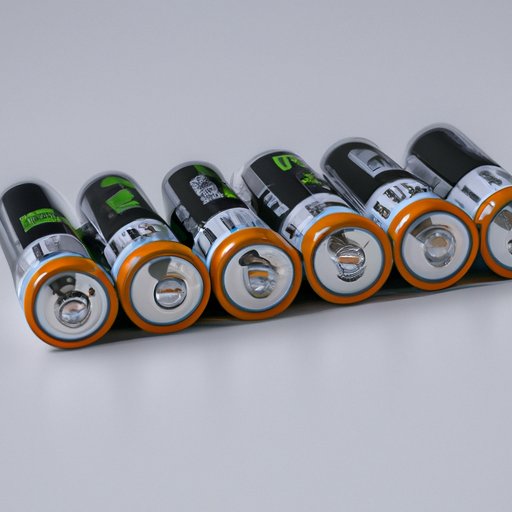The energy storage sector has seen a paradigm shift over the past few decades, with lithium-ion batteries emerging as a cornerstone technology. This advent can be attributed to their high energy density, long lifespan, and relatively low self-discharge rate. However, what exactly makes up these powerhouses of energy storage? This article aims to delve into the intricate composition of lithium-ion batteries, exploring their various aspects, implications, challenges, and potential solutions, with a specific emphasis on the popular 14500 lithium battery and the robust 26650 lithium battery.
Lithium-Ion Battery Composition: A Detailed Look
A typical lithium-ion battery consists of four main components: the anode, the cathode, the electrolyte, and the separator.
- Anode: The anode, often composed of graphite, serves as the negative electrode. When the battery is in use (discharging), lithium ions move from the anode to the cathode, traveling through the electrolyte.
- Cathode: The cathode, the positive electrode, is usually composed of a lithium metal oxide. The exact composition can vary, with common forms being lithium cobalt oxide (LiCoO2), lithium iron phosphate (LiFePO4), lithium manganese oxide (LiMn2O4), and lithium nickel manganese cobalt oxide (NMC). The cathode’s composition significantly impacts the battery’s overall performance, capacity, and safety.
- Electrolyte: The electrolyte is a lithium salt in an organic solvent. It functions as the medium for lithium-ion movement between the anode and the cathode during charging and discharging cycles.
- Separator: The separator is a thin insulating layer that prevents a short circuit between the anode and the cathode while still allowing the passage of lithium ions.
The Challenges and Potential Solutions
While lithium-ion batteries have revolutionized energy storage, they are not without their challenges. Safety is a significant concern, as overheating can lead to a thermal runaway reaction, causing fires or explosions. Battery lifespan and energy density are also areas where improvements can be made.
Advancements in research have led to the development of newer lithium-ion chemistries that aim to address these issues. For example, lithium iron phosphate (LiFePO4) offers enhanced safety features and a longer lifespan, although at a reduced energy density. On the other hand, NMC offers a higher energy density and better lifespan, albeit with increased safety concerns.
The 14500 lithium battery, a popular choice for high-drain devices, exemplifies the balance between performance, safety, and lifespan. This battery type often utilizes the safer LiFePO4 chemistry, providing a robust and reliable power source for various applications.
Another notable mention is the 26650 lithium battery, known for its high capacity and endurance. These batteries usually employ NMC chemistry, offering higher energy density, which makes them ideal for power-intensive applications.
The Future of Lithium-Ion Batteries
With advancements in materials science and electrochemistry, the future of lithium-ion batteries looks promising. The development of solid-state lithium-ion batteries, with a solid electrolyte, is an area of active research. This technology promises to improve safety, increase energy density, and potentially reduce production costs.
Moreover, efforts are being made to develop anode materials beyond graphite, such as silicon,which can store more lithium ions and therefore potentially dramatically increase energy density. However, silicon undergoes significant volume changes during charging and discharging, leading to mechanical stress and degradation of the battery. Scientists are exploring various strategies to circumvent these challenges, including the use of silicon alloys, nanostructured silicon, and silicon-graphite composites.
In addition to material advancements, manufacturing techniques and battery management systems are continually improving, enhancing the performance, safety, and lifespan of lithium-ion batteries. New recycling methods are also being developed to address the environmental impact of battery disposal, aiming to recover valuable materials and reduce the demand for virgin resources.
Conclusion
Lithium-ion batteries, with their high energy density and long lifespan, have revolutionized energy storage and enabled the proliferation of electric vehicles and renewable energy systems. Their complex composition – from the graphite anode and lithium metal oxide cathode to the lithium salt electrolyte and separator – has significant implications for their performance, safety, and lifespan.
Innovations, such as the 14500 lithium battery and the 26650 lithium battery, showcase the versatility and adaptability of lithium-ion battery technology, catering to a wide range of applications with different energy and safety requirements.
Despite the challenges, ongoing research and development in materials science, manufacturing techniques, and battery management systems promise a bright future for lithium-ion batteries. The quest for safer, more energy-dense, longer-lasting, and environmentally friendly batteries continues, with the potential to power a more sustainable future.
(Note: Is this article not meeting your expectations? Do you have knowledge or insights to share? Unlock new opportunities and expand your reach by joining our authors team. Click Registration to join us and share your expertise with our readers.)
